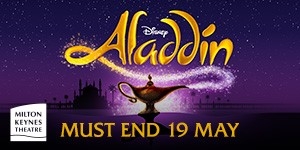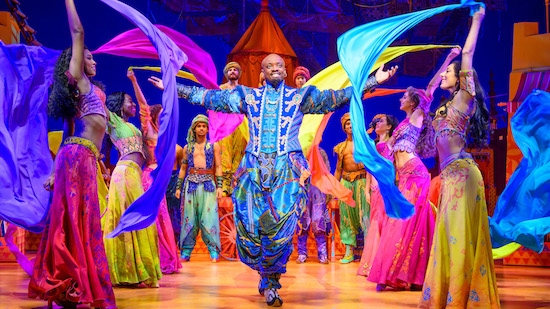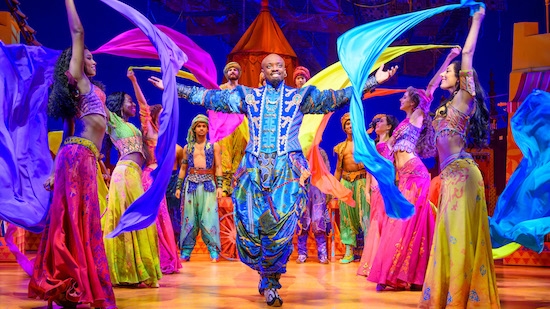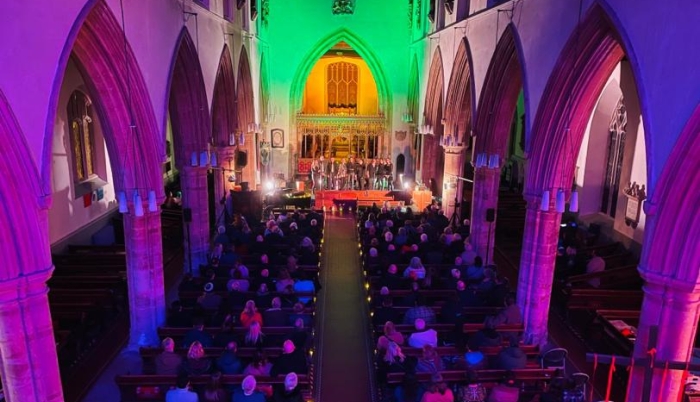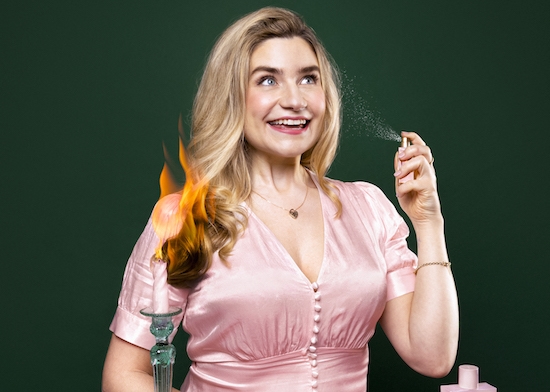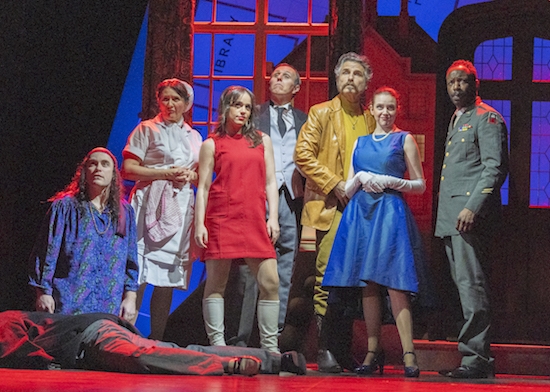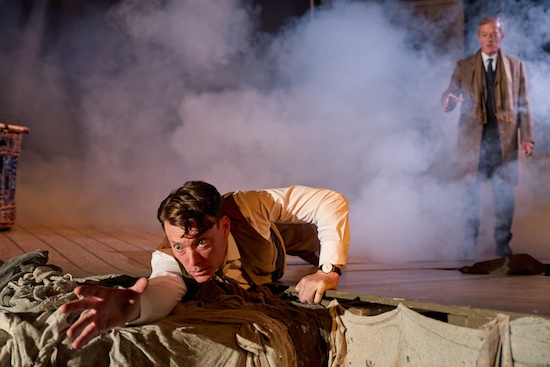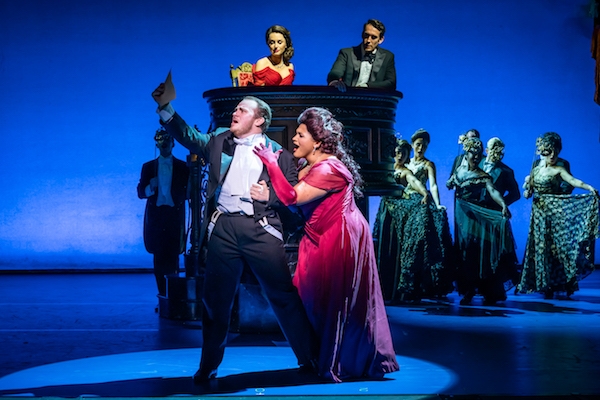Matthew Bourne’s Sleeping Beauty is a dreamy dance–theatre production that irresistibly reimagines a familiar tale as a gothic romance. A decade since its debut, it is as spellbinding as ever, writes Georgina Butler.
Choreographer and director Sir Matthew Bourne is a superlative storyteller, celebrated for cleverly refreshing well-known narratives.
He adds ingenious details and uses extravagant theatrics to create entertaining shows that appeal to a broad audience of non-dancegoers, as well as dance aficionados. The dancing is integral to his creations, but the magic is not in the individual steps he links together.
Instead, it is the overall effect of his perceptive approach that inspires awe.
Bourne’s Sleeping Beauty embellishes the original scenario with a relatable logic, without sacrificing the fairytale allure. Traditionally, the princess wakes up after a century of enforced slumber and weds the first man she sees. This stranger finds her thanks to intervention from the Lilac Fairy. Bourne makes the love story more convincing, but remains mindful that we are all suckers for some fantasy.
His Princess Aurora falls in love before she falls asleep: romance blossoms between the royal and her childhood sweetheart. Count Lilac, King of the Fairies, then gamely sinks his teeth into solving the problem of how Aurora’s beloved can still be there for her one hundred years later.
When Marius Petipa’s classical ballet premiered in 1890, belief in fairies was widespread. When Bourne devised his vamped-up version, which premiered in late 2012, everyone had been bitten by the vampire trend. Nowadays? Flutter your wings and flaunt your fangs!
Seriously, how can you not fall under the spell of a production that features fairies, vampires, a time-travelling love story and dramatic, dynamic dancing?
New Adventures first performed Bourne’s Sleeping Beauty at Milton Keynes Theatre in 2013 and revived the show for a second visit in 2016. You may have been blessed to get your fairytale fix back then and be returning, or you might be counting down the sleeps to your first performance this week. Either way, rest assured that this production remains a must-see theatrical treat.
Everybody knows that fairies flocked to bless baby Aurora “once upon a time”. Bourne’s timeline specifies that the era of Aurora dawns in 1890, so her birth coincides with the time the ballet was created.
She then comes of age in the famously golden Edwardian summer of 1911, lingers in a latent limbo when Carabosse’s curse is fulfilled and regains consciousness in 2011 (the present day, more or less). The incredible scope this timeline provides for dance styles and stagecraft is a dream come true for Bourne and his long-time collaborators Lez Brotherston (set and costume designer) and Paule Constable (lighting designer). There are plenty of pinch-me moments as supernatural figures dart around and wondrous worlds open up.
The fairies glide onstage, in all their darkly glittering glory, just after baby Aurora’s bedtime. In a joyful departure from the classical norm, in which blankets and a cradle suggest the presence of an inert infant, this baby Aurora is a very visible, very mobile and very mischievous puppet. Manipulated by unseen puppeteers, she crawls, climbs and cries.
In response, her weary attendants chase, clutch and console her. Later, she sits up in her cot to watch the fairies dance their quirky solos, animatedly waving her arms in amusement.
Follow Total MK on Facebook: here and twitter here for breaking news in Milton Keynes
Fully grown Aurora (the radiant Ashley Shaw on press night) makes her first appearance in her parents’ worst nightmare, as a faceless apparition of the young woman the baby will one day become. King Benedict and Queen Eleanor are horrified as devilish Carabosse (a domineering Paris Fitzpatrick in drag) unleashes her curse, revealing that the daughter they are yet to properly get to know will prick her finger and die when she is on the cusp of adulthood.
Fortunately, Count Lilac (charismatic Dominic North) casts a counter-spell. He promises that Aurora will instead fall into a deep sleep and, eventually, be roused by her true love.
The love between Princess Aurora and Leo, the royal gamekeeper, is expressed playfully, youthfully and believably. That curious, rough-and-tumble baby blooms into a spirited young woman who prefers to be barefoot, knows her own mind and follows her heart.
After waltzing with an enigmatic stranger at her birthday party (Fitzpatrick again, this time as Caradoc, Carabosse’s vengeful son), Aurora frolics with Leo (tender, sprightly Stephen Murray) in a rose garden. Here, Tchaikovsky’s ‘Rose Adage’ is choreographed as a gentle yet impassioned duet.
The besotted couple enjoy sideways glances, soaring lifts and sweeping embraces that contentedly collapse to the floor.
Of course, there can be no rose without thorns, and this wholesome romance is threatened by brooding, dangerous Caradoc. He presents a lethal black rose. Aurora staggers into a comatose state. Count Lilac ushers Aurora off to the Land of the Sleepwalkers.
Aurora blindly ventures through this otherworldly labyrinth of sleep, waiting to be saved by a kiss. Meanwhile, Leo makes slow-motion progress along the passage of time. Finally reunited, they escape the enchantment and find themselves in a realm that never sleeps – a nightclub where Caradoc is hosting a vampiric masquerade ball.
He is intent on marrying Aurora, but Count Lilac is equally determined not to let Leo’s efforts so far be in “vein”.
Symbolism abounds in the fairy tale of The Sleeping Beauty and the classical ballet has its own multi-layered motifs and memorable moments, which are inseparable from Tchaikovsky’s glorious score. Bourne’s interpretation is a radical reworking, but balletomanes and folklore fans will appreciate the nods to classical choreography and fascinating themes.
At heart, it is still the story of a longed-for child, good versus evil and true love’s kiss. It is still danced to Tchaikovsky’s music (albeit recorded, tweaked and intensified with loud claps of thunder and a deluge of drumming rain). And there is certainly no doubt that its happily ever after is eternal.
Congratulations to the creatives, crew and cast – no-one is sleepwalking through this beauty of a production. Reader, don't sleep on it. Get your tickets booked before they all fly away!
Matthew Bourne's Sleeping Beauty continues at Milton Keynes Theatre until Saturday 21 January.
Georgina Butler is an editor, a dance writer and a ballet teacher. Click here and follow her on Twitter @GeorginaLButler and Instagram @glbdancewriter



